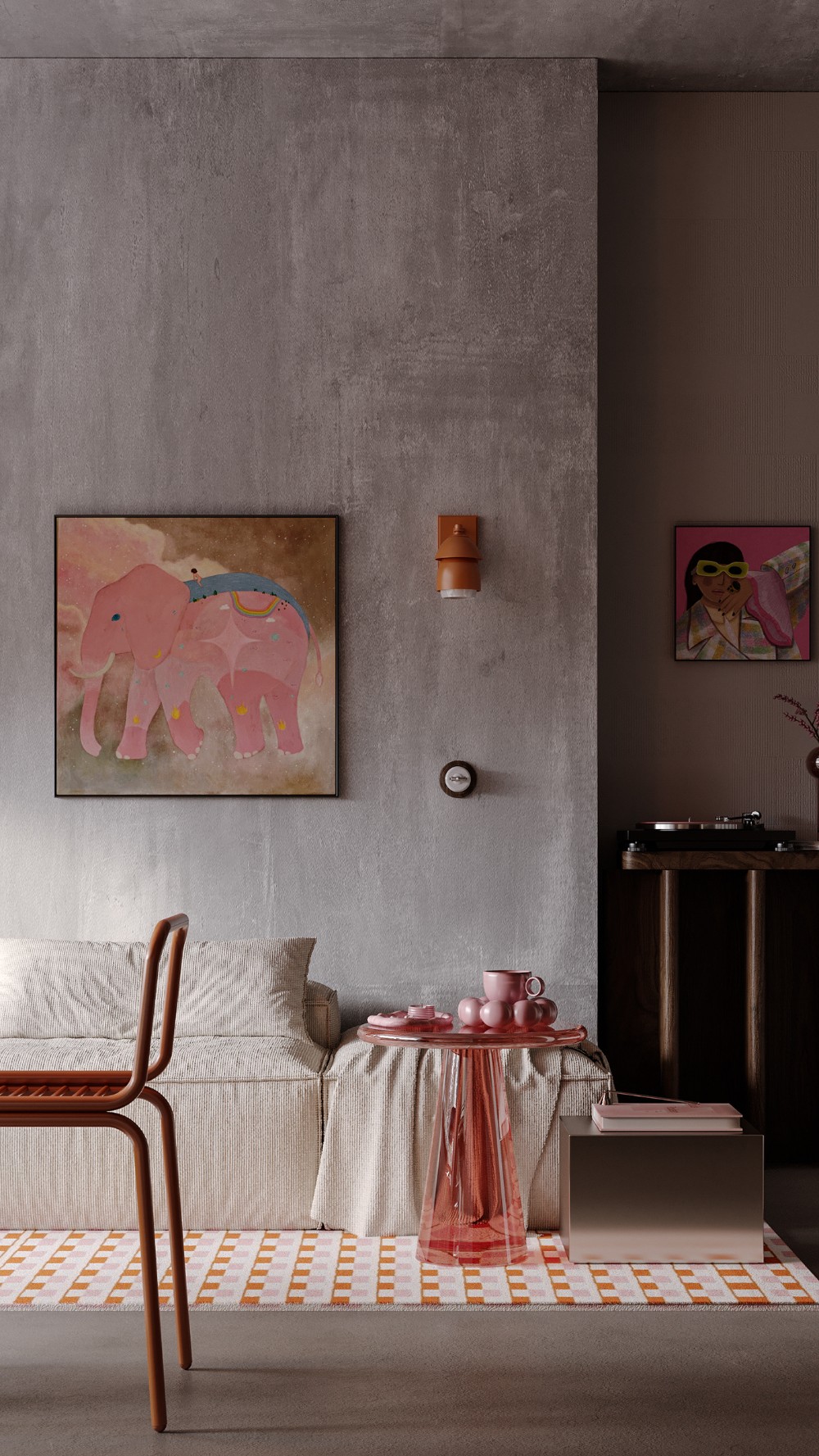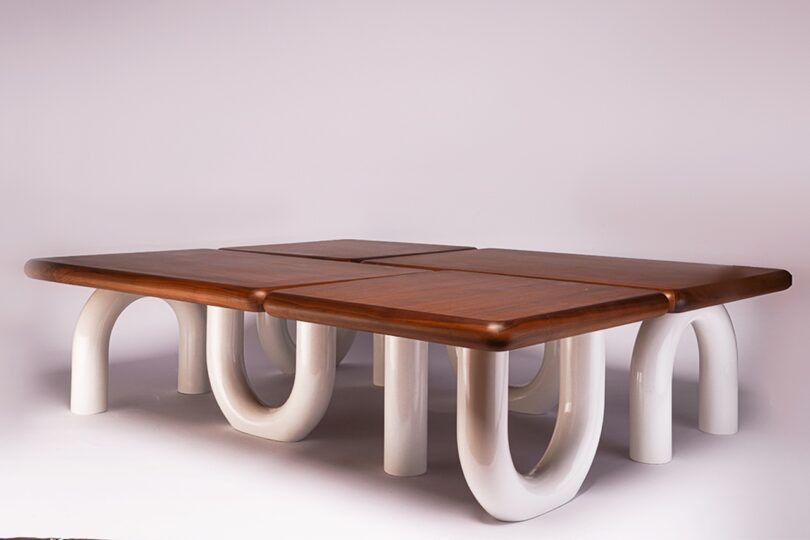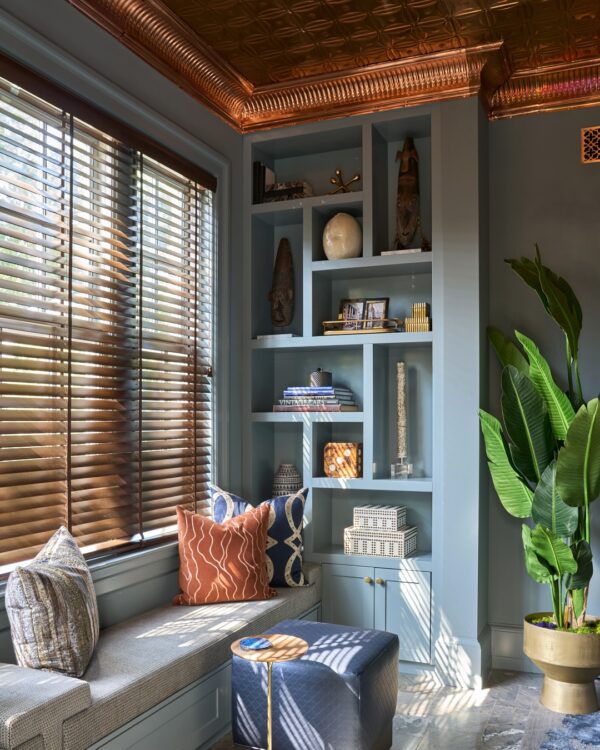Lampshades Can Make (or Break!) a Room—Here Are the Top Designer Secrets to Getting It Just Right
Pictured above: A media room designed by Robin Henry, featuring an RT Facts lamp with custom shade.Let’s be honest: lampshades don’t always get the love they deserve. But this small design detail can totally transform the look and feel of a room. The right shade can elevate a lamp from basic to brilliant, soften a space with warm ambient light, or make a bold statement all on its own. And now that lampscaping—the idea of using multiple lampsto layer light throughout a space instead of relying on harsh overheads—is officially a thing, knowing how to pick the best shade for your lamp feels more essential than ever. It's all about creating ambiance and mood, and it starts with choosing the right topper.Whether you're going classic, playful, minimalist, or maximalist, there’s a shade out there just waiting to light up your life.Don’t be afraid to mix and match lamp bases and shades for a custom, curated look. A sculptural base with a pleated or patterned shade? Yes, please. A sleek brass lamp with a bold-colored linen shade? Instant upgrade. Lampshades are an easy, affordable way to refresh your decor without a full-on overhaul—so have fun with it. Just don’t forget to consider size, shape, and material to make sure your lamp’s glow-up is as good as it gets. We asked interior designers to enlighten uson how to pick the perfect lampshade and ensure the scale is on point.Related StoriesChoose a SizeNicolas GourguechonFollowing the rule of thumb, the shade-to-base ratio of this entryway lamp in designer Devin Kirk’s own home is perfectly balanced.Amy NeunsingerTwo light sources mean two different shades and fittings in the Quadrille Arbre de Matisse adorned guest room of this home designed by Mark D. Sikes.Size definitely matters—at least when it comes to lampshades. First things first: proportions. A too-small shade looks awkward, and a too-large one can overwhelm the base. As a rule of thumb, according to interior designer and author Lauren Liess, "a lampshade should be roughly two-fifths of the total height of the full lamp, including the shade." So, if your lamp is 30 inches tall, aim for a 20-inch shade. That said, “there’s always an exception,” Liess adds. Retro styles often play with scale and can look fantastic with oversized or unusually shaped shades. A tall shade on a short, squat base? Totally works—just embrace the proportions. Width-wise, the shade should typically match the height of the base. And yes, it should always cover the bulb socket and any hardware. This is not the time for exposed necks. Speaking of hardware, not all shades work with all lamps, so fittings matter. The most common is a spider fitter, which works with lamps that have a harp and finial. If your lamp doesn’t have a harp, try an UNO fitter. And for chandeliers or small accent lamps, clip-on shades are a quick and easy option. Just make sure whatever you use sits level and snug—wobbly lamp syndrome is never chic.Related StoryChoose a ShapeNathan SchroderA crisp white drum adorns a statement lamp base, making it stand out against the charcoal draperies in the dining room of this Dallas home designed by Studio Thomas James.Eric PiaseckiA stark white sculptural base paired with a simple tapered shade stands out while still letting the faux moiré painted walls shine in this Westchester County, NY, farmhouse designed by Robin Henry.Lampshades come in all shapes, and each one sets a different tone. Drum shades—those modern cylindrical beauties—are perfect for both contemporary and midcentury styles. “The drum is versatile enough for both modern and traditional interiors,” says Liess. Whitney Tingle, director of interior design at Christopher Architecture & Interiors, loves using oversize drum shades in linen to soften bold, sculptural bases with understated texture. Empire, coolie, and other tapered shade styles, which slope from a narrow top to a wide base, are timeless and elegant. Liess recommends them for chunkier, rounder lamp bases—think genie bottles or spherical silhouettes. For something romantic and soft, look no further than bell shades. Their graceful curves bring a vintage-inspired, feminine touch to more traditional spaces. Nicolas GourguechonFor his own home, designer Devin Kirk matched a square lamp shade with a vintage, metallic base of similar shape for an impactful lighting detail in this sophisticated family room.Lisa Romerein/Otto"In one of my favorite master bedrooms, this patterned shade adds dimension and an unexpected wit while staying traditional." — Michael S. SmithOn the other end of the spectrum, square and rectangular shades lend structure and sharpness, and they’re best used on lamps that also have a square or rectangular shape, according to Liess. Short on space? Oval shades are a smart solution. They’re ideal for lamps with distinct front-and-back silhouettes and add a polished feel without taking up extra room. And then, there are pleated shades—the darlings of traditional design. “They make a space feel decorated,” says Liess, who calls them an “old-guard designers’ staple.” Tingle recommends customizing pleated shades with color and pattern for maximum personality, especially when paired with a simple brass base.Related StoryChoose a MaterialFrancesco Lagnese"Zuber wallpaper is too expensive to not use every square inch of it, so we made shades from leftover scraps." — Tom ScheererBrie WilliamsBasic white lampshades were swapped for custom Euro-style “skirted” versions in a striped pattern that echoes the ridges of the lamp base in this primary bedroom by Heidi Woodman.Material doesn’t just determine the look of your shade—it defines the quality and style of the light itself. Paper shades are minimal and clean, often found in Scandinavian and Japandi-inspired interiors. They're especially charming in pendant or hanging styles. Designer Tom Scheerer has even used leftover wallpaper to create custom paper shades, giving his space a "surrealist touch." Fabric shades—linen, cotton, or silk—are the most versatile. Linen and cotton diffuse light beautifully, making any space feel soft and inviting. Silk ups the drama, casting a flattering, luxe glow that's perfect for bedrooms or formal living areas. These materials can work with virtually any shape or lamp style. Lampshade skirts, like those seen in interior designer Heidi Woodman's space, are also a fun option when using fabric for shades.Want something a little more modern and edgy? Metal shades cast directional light that's great for task lighting—perfect on a desk or reading lamp. Just a heads up from Liess: Metal shades can heat up, so skip them in nurseries or kid-centric zones. Or you can add unexpected texture and an instant coastal feel with a shade made out of rattan. Related StoryChoose a Color and PatternStephen KarlischIn her own home, designer Shazalynn Cavin-Winfrey used Coquette fabric by Kelly Wearstler on the walls, bed, and lampshades for the lighting on the bookshelf, while the bedside lamps are paired with custom lampshades from Shades from the Midnight Sun.Simon Watson"I love Pierre Frey’s Le Manach Balmoral and, inspired by French bedrooms, I used it all over. Custom-covered shades add so much." — Ellen NivenThis is where you get to play. If your lamp base is doing most of the talking, stick with a neutral shade—think white, beige, or soft gray. These tones complement almost everything without drawing too much attention. But if you want your shade to be the star, don’t hold back. Patterned or brightly colored shades can instantly energize a room. Want to go full-on, pattern-drenching maximalist? Try matching your shade fabric to drapery, pillows, or even wallpaper. “It becomes more than just a lighting element,” says Tingle. “It transforms into a cohesive design feature, seamlessly tying into the overall narrative of the space.” Frank Frances StudioDesigner Courtney McLeod paired a Broome lampshade with a Wildwood lamp for this sultry primary bedroom in her clients’ downtown New York apartment.And yes, we’re here for the moody, sexy glow of a dark shade too. It’s perfect for intimate nooks or elegant bedrooms where atmosphere is everything.Follow House Beautiful on Instagram and TikTok.
#lampshades #can #make #break #roomhere
Lampshades Can Make (or Break!) a Room—Here Are the Top Designer Secrets to Getting It Just Right
Pictured above: A media room designed by Robin Henry, featuring an RT Facts lamp with custom shade.Let’s be honest: lampshades don’t always get the love they deserve. But this small design detail can totally transform the look and feel of a room. The right shade can elevate a lamp from basic to brilliant, soften a space with warm ambient light, or make a bold statement all on its own. And now that lampscaping—the idea of using multiple lampsto layer light throughout a space instead of relying on harsh overheads—is officially a thing, knowing how to pick the best shade for your lamp feels more essential than ever. It's all about creating ambiance and mood, and it starts with choosing the right topper.Whether you're going classic, playful, minimalist, or maximalist, there’s a shade out there just waiting to light up your life.Don’t be afraid to mix and match lamp bases and shades for a custom, curated look. A sculptural base with a pleated or patterned shade? Yes, please. A sleek brass lamp with a bold-colored linen shade? Instant upgrade. Lampshades are an easy, affordable way to refresh your decor without a full-on overhaul—so have fun with it. Just don’t forget to consider size, shape, and material to make sure your lamp’s glow-up is as good as it gets. We asked interior designers to enlighten uson how to pick the perfect lampshade and ensure the scale is on point.Related StoriesChoose a SizeNicolas GourguechonFollowing the rule of thumb, the shade-to-base ratio of this entryway lamp in designer Devin Kirk’s own home is perfectly balanced.Amy NeunsingerTwo light sources mean two different shades and fittings in the Quadrille Arbre de Matisse adorned guest room of this home designed by Mark D. Sikes.Size definitely matters—at least when it comes to lampshades. First things first: proportions. A too-small shade looks awkward, and a too-large one can overwhelm the base. As a rule of thumb, according to interior designer and author Lauren Liess, "a lampshade should be roughly two-fifths of the total height of the full lamp, including the shade." So, if your lamp is 30 inches tall, aim for a 20-inch shade. That said, “there’s always an exception,” Liess adds. Retro styles often play with scale and can look fantastic with oversized or unusually shaped shades. A tall shade on a short, squat base? Totally works—just embrace the proportions. Width-wise, the shade should typically match the height of the base. And yes, it should always cover the bulb socket and any hardware. This is not the time for exposed necks. Speaking of hardware, not all shades work with all lamps, so fittings matter. The most common is a spider fitter, which works with lamps that have a harp and finial. If your lamp doesn’t have a harp, try an UNO fitter. And for chandeliers or small accent lamps, clip-on shades are a quick and easy option. Just make sure whatever you use sits level and snug—wobbly lamp syndrome is never chic.Related StoryChoose a ShapeNathan SchroderA crisp white drum adorns a statement lamp base, making it stand out against the charcoal draperies in the dining room of this Dallas home designed by Studio Thomas James.Eric PiaseckiA stark white sculptural base paired with a simple tapered shade stands out while still letting the faux moiré painted walls shine in this Westchester County, NY, farmhouse designed by Robin Henry.Lampshades come in all shapes, and each one sets a different tone. Drum shades—those modern cylindrical beauties—are perfect for both contemporary and midcentury styles. “The drum is versatile enough for both modern and traditional interiors,” says Liess. Whitney Tingle, director of interior design at Christopher Architecture & Interiors, loves using oversize drum shades in linen to soften bold, sculptural bases with understated texture. Empire, coolie, and other tapered shade styles, which slope from a narrow top to a wide base, are timeless and elegant. Liess recommends them for chunkier, rounder lamp bases—think genie bottles or spherical silhouettes. For something romantic and soft, look no further than bell shades. Their graceful curves bring a vintage-inspired, feminine touch to more traditional spaces. Nicolas GourguechonFor his own home, designer Devin Kirk matched a square lamp shade with a vintage, metallic base of similar shape for an impactful lighting detail in this sophisticated family room.Lisa Romerein/Otto"In one of my favorite master bedrooms, this patterned shade adds dimension and an unexpected wit while staying traditional." — Michael S. SmithOn the other end of the spectrum, square and rectangular shades lend structure and sharpness, and they’re best used on lamps that also have a square or rectangular shape, according to Liess. Short on space? Oval shades are a smart solution. They’re ideal for lamps with distinct front-and-back silhouettes and add a polished feel without taking up extra room. And then, there are pleated shades—the darlings of traditional design. “They make a space feel decorated,” says Liess, who calls them an “old-guard designers’ staple.” Tingle recommends customizing pleated shades with color and pattern for maximum personality, especially when paired with a simple brass base.Related StoryChoose a MaterialFrancesco Lagnese"Zuber wallpaper is too expensive to not use every square inch of it, so we made shades from leftover scraps." — Tom ScheererBrie WilliamsBasic white lampshades were swapped for custom Euro-style “skirted” versions in a striped pattern that echoes the ridges of the lamp base in this primary bedroom by Heidi Woodman.Material doesn’t just determine the look of your shade—it defines the quality and style of the light itself. Paper shades are minimal and clean, often found in Scandinavian and Japandi-inspired interiors. They're especially charming in pendant or hanging styles. Designer Tom Scheerer has even used leftover wallpaper to create custom paper shades, giving his space a "surrealist touch." Fabric shades—linen, cotton, or silk—are the most versatile. Linen and cotton diffuse light beautifully, making any space feel soft and inviting. Silk ups the drama, casting a flattering, luxe glow that's perfect for bedrooms or formal living areas. These materials can work with virtually any shape or lamp style. Lampshade skirts, like those seen in interior designer Heidi Woodman's space, are also a fun option when using fabric for shades.Want something a little more modern and edgy? Metal shades cast directional light that's great for task lighting—perfect on a desk or reading lamp. Just a heads up from Liess: Metal shades can heat up, so skip them in nurseries or kid-centric zones. Or you can add unexpected texture and an instant coastal feel with a shade made out of rattan. Related StoryChoose a Color and PatternStephen KarlischIn her own home, designer Shazalynn Cavin-Winfrey used Coquette fabric by Kelly Wearstler on the walls, bed, and lampshades for the lighting on the bookshelf, while the bedside lamps are paired with custom lampshades from Shades from the Midnight Sun.Simon Watson"I love Pierre Frey’s Le Manach Balmoral and, inspired by French bedrooms, I used it all over. Custom-covered shades add so much." — Ellen NivenThis is where you get to play. If your lamp base is doing most of the talking, stick with a neutral shade—think white, beige, or soft gray. These tones complement almost everything without drawing too much attention. But if you want your shade to be the star, don’t hold back. Patterned or brightly colored shades can instantly energize a room. Want to go full-on, pattern-drenching maximalist? Try matching your shade fabric to drapery, pillows, or even wallpaper. “It becomes more than just a lighting element,” says Tingle. “It transforms into a cohesive design feature, seamlessly tying into the overall narrative of the space.” Frank Frances StudioDesigner Courtney McLeod paired a Broome lampshade with a Wildwood lamp for this sultry primary bedroom in her clients’ downtown New York apartment.And yes, we’re here for the moody, sexy glow of a dark shade too. It’s perfect for intimate nooks or elegant bedrooms where atmosphere is everything.Follow House Beautiful on Instagram and TikTok.
#lampshades #can #make #break #roomhere
·9 Views










